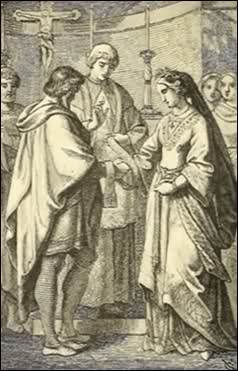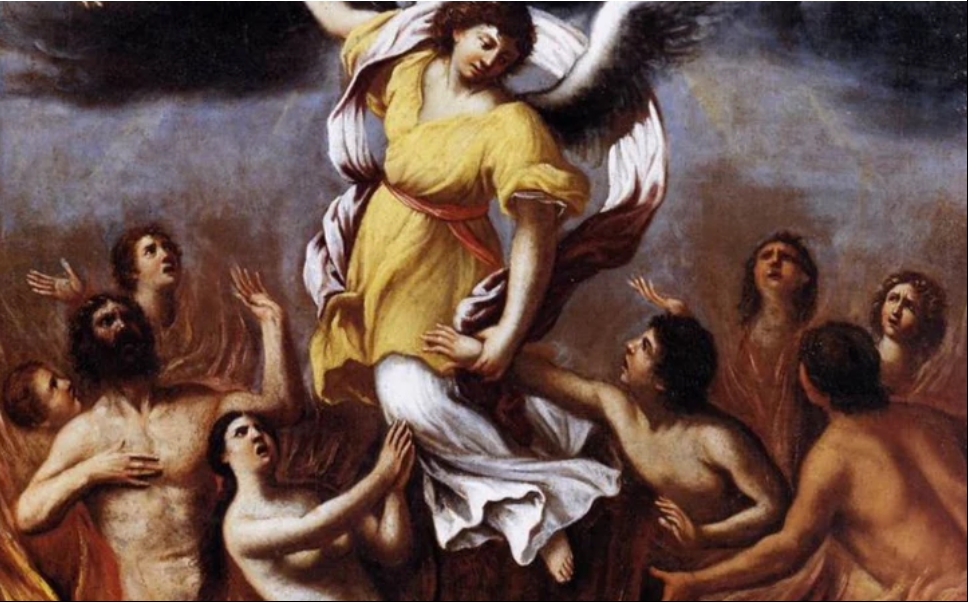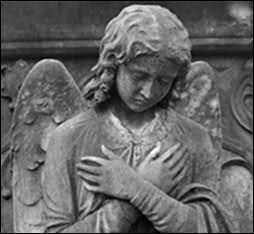The Third Secret of Fatima and The Post-Conciliar Debacle- Part 1

"The Church will be in eclipse..." -Our Lady of La Salette
On October 11, 1962, two days before the 45th anniversary of the final apparition of the Blessed Virgin Mary at Fatima and the Miracle of the Sun, Pope John XXIII addressed the opening session of the Second Vatican Council. Pope John was pleased to announce to the assembled bishops that the calling of this Council “was completely unexpected, like a flash of heavenly light, shedding sweetness in eyes and hearts.”1
What is more, this unexpectedly-called Council would make no effort to condemn any of the errors threatening the Church and the world, including communism, because “Nowadays … the spouse of Christ prefers to make use of the medicine of mercy rather than the arms of severity. She considers that she meets the needs of the present day by demonstrating the validity of her teaching rather than by issuing condemnations.2 Considering that Pius XII had issued scathing condemnations of communism and neo-modernism, along with interdicts and automatic excommunications reserved to the Apostolic See, by “nowadays” Pope John presumably meant the four years which had elapsed since his predecessor’s death.
The “flash of heavenly light” which impelled Pope John to call his Council had occurred during a stroll in the Vatican gardens at the end of 1958, when he experienced “the first sudden bringing up in our hearts and lips of the simple words: ‘ecumenical council’ “. On January 25, 1959, Pope John announced his sudden inspiration to the Sacred College of Cardinals. Their reaction was stunned silence.3
Eight months after he had committed himself and the Church to the Council, Pope John would read the Third Secret of Fatima those 23 lines on a piece of notebook paper in the handwriting of Sister Lucia dos Santos, the last surviving seer of Our Lady’s apparitions at the Cova da Iria in 1917. The first two “secrets” had already been disclosed to the world in 1942 in the form of Sister Lucy’s memoirs, but Sister Lucy had entrusted the sealed text of the Third Secret to the bishop of Fatima-Leiria, who could have disclosed it at any time. By 1957, however, the sealed envelope had found its way to the Vatican where it was kept in a wooden safe in the papal apartments of Pius XII. It is generally supposed that Pius XII had not read The Third Secret before he died in 1958.
Sister Lucy had made the Bishop of Fatima-Leiria promise that the Secret would be read to the world at her death, but in no event later than 1960, “because Our Lady wishes it so.” As Sister Lucy would later explain to Cardinal Ottaviani and Canon Barthas (a renowned Fatima expert), Our Lady told her that the Secret must be disclosed by 1960 “because it will be clearer.” In 1946 Cardinal Cerejeira, the Patriarch of Portugal, publicly promised that the Secret “will be opened in 1960.” Rome voiced no objection. On the contrary, Cardinals Ottaviani and Tisserant publicly echoed the promise of Cardinal Cerejeira, as did numerous other Church authorities over the years.4 There was even an American television show entitled “Zero 1960”, which took its theme from the universally expected disclosure of the Secret. Produced by the once-militant Blue Army, the show was so popular it received a “star” rating in The New York Times.5
And so, as 1959 drew to a close, Catholics around the world waited eagerly for the imminent completion of the Message of Fatima. The Marian devotion which had flourished during the reign of Pius XII reached new heights in anticipation. But it was not to be. On February 8, 1960, the faithful received the devastating news: Acting through the double blind of a Portuguese press agency, anonymous “Vatican sources” let it be known that the Third Secret would not be disclosed that year and “would probably remain, forever, under absolute seal.”6
Obviously humiliated, Cardinal Cerejeira publicly declared: “I affirm categorically that I was not consulted.” The Blue Army’s spokesman at the time, John Haffert, would later express the mourning of the faithful:
“1960 came and went and the Pope to whom the Secret had been entrusted did not make it public. He did not even make known the fact that he had opened it. The silence from Rome lay heavily on all of us. People began to murmur that Fatima must have been a fake, that there was no secret, that the 1960 secret was a ‘hoax’ [By 1964] the effect of the long silence concerning the 1960 Secret still seemed to hang over us like a pall.”7
The Secret carried to earth by the Blessed Virgin Mary had been buried by those to whom it was entrusted. The Message of Fatima would remain incomplete. Two years after Pope John had read the Secret and placed it “under absolute seal”, the Second Vatican Council convened. The liberal media of the day were abuzz with rumors of great changes about to occur in the Church. The Council, with its unprecedented non-Catholic “observers” and its strangely ambiguous documents, did not disappoint them. As for the Council’s implementation, it would exceed their wildest dreams.
The Writing Down of the Secret
Bishop da Silva was greatly afraid that Sister Lucia dos Santos who had been ill for several months, would die at the convent in Tuy, Spain that October in 1943. In the days before antibiotics a case of pleurisy could easily become a terminal illness. If she died now, she would have left undone a task of immense importance.
In 1941 Sister Lucy had written her third and fourth memoirs, committing to writing the first two parts of the great Secret of Fatima, which she had already conveyed in substance in a note to Pius XII. We know well the first two parts of the Secret Our Lady disclosed to the seers:
“You have seen hell, where the souls of poor sinners go. To save them, God wishes to establish devotion to My Immaculate Heart. If what I say to you is done, many souls will be saved. The war [World War I] is going to end, but if people do not cease offending God, a worse one [World War II] will break out during the Pontificate of Pius XI [who had not yet been elected]. When you see a night illumined by an unknown light, know that this is the great sign given to you by God that He is about to punish the world for its crimes, by means of war, famine and persecutions of the Church and of the Holy Father.”
“To prevent this, I will come to ask for the consecration of Russia to My Immaculate Heart and the Communion of Reparation on the First Saturdays. If My requests are heeded, Russia will be converted and there will be peace. If not, she [Russia] will spread her errors throughout the world, causing wars and persecutions against the Church. The good will be martyred; the Holy Father will have much to suffer; various nations will be annihilated.”
We know also that every prophecy contained in the first two parts of the Secret (except for the annihilation of nations) has been fulfilled. And that the predicted punishments are still being suffered by the Church and the world. Of course, there would have been little reason to doubt that the prophecies were true, for Sister Lucy had been granted by Heaven a singular prophetic credential: No one in the history of the world, not even Moses, has ever correctly predicted the precise date and time of a public miracle except for a little girl named Lucia dos Santos. Some 70,000 people, atheists included, had seen the Miracle of the Sun at the very time and place Our Lady had told Lucy it would occur. To suggest that God would waste this unprecedented credential on an unreliable witness would be little short of blasphemy.
Given the divine corroboration of Sister Lucy’s testimony, there could be no question that the great Secret of Fatima would be assimilated into the life and patrimony of the Church. And so, to this day we practice the Communion of Reparation on the First Saturdays, and our Rosaries include the very prayer Our Lady had dictated to Sister Lucy just after the second part of the Secret was concluded: “O my Jesus, forgive us our sins, and save us from the fires of Hell. Lead all souls to Heaven, especially those most in need.”
But what of the third part of the great Secret, the part which has come to be called, in itself, “the Third Secret of Fatima”? In her third memoir Sister Lucy has made it clear that “the secret is made up of three parts, two of which I am going to reveal.” In her fourth memoir she restated the first two parts, leaving out once again “that part of the Secret which I am not permitted to reveal at present.” Yet in the fourth memoir Sister Lucy did reveal one additional fragment of the Secret which had not appeared in the third memoir: Before the “O my Jesus”, and after the end of the second part of the Secret, we find this curious sentence, obviously deprived of its context –
“Em Portugal se conservera sempre o doguema da f‚.” – “In Portugal, the dogma of the Faith will always be preserved.”
The first two parts of the Secret say nothing about the loss of dogma anywhere in the world, so why this reference to the preservation of dogma in Portugal? Does the Third Secret warn us, then, of a loss of dogma throughout the rest of the world?
As Sister Lucy’s ordinary, Bishop da Silva undoubtedly perceived his obligation to insure that she did not die without disclosing the remainder of that great Secret which had already so greatly affected the life of the Church and the course of human history. This was no mere exercise in reminiscence; it was a grave duty to the Church and the world. What if she died?
In September of 1944, Bishop da Silva suggested that Sister Lucy write down the text of what we now refer to as the Third Secret, but she said that she could not take that responsibility upon herself without a formal, written order. Even when the order was given a month later, the seer who had written freely of wars, famines, persecutions and the annihilation of nations, could not commit to paper a prophecy that was evidently far more disturbing to her than these events. She, who had lived a life of obedience to her superiors, literally could not make her hand move across the paper. She attributed this paralysis to a preternatural cause.8
Finally, on January 2, 1944, Sister Lucy was able to write down the text of the Secret in the chapel at the convent of Tuy. According to the account of Canon Martins dos Reis, she was able to proceed only “after Our Lady appeared to her to tell her to write the famous secret … in conformity with what had been asked of her.”9
On January 9, 1944, Sister Lucy wrote to Bishop da Silva to tell him that the Third Secret of Fatima had been written down and placed in a sealed envelope. On June 17, 1944, the envelope was delivered to Bishop da Silva, by Sister Lucy’s bishop confessor in Tuy. The five month delay had resulted from Sister Lucy’s unwillingness to entrust the envelope to anyone but a bishop not even a priest would do. Bishop da Sliva offered to forward the envelope to the Holy Office. Rome rejected the offer. The burden of the Secret would remain on Bishop da Silva, who made the famous promise to Lucy that the envelope would be unsealed and the Secret revealed not later than 1960.
After an urgent interrogation of Sister Lucy by Cardinal Ottaviani in May 1955, the Holy Office rescinded its earlier rejection of the text of the Third Secret and requested it be delivered to Rome by the Nuncio in Lisbon. Just before the envelope was brought to the Nuncio, Bishop da Silva’s auxiliary, Bishop Venancio, held it up to the light: He could clearly discern the 23 lines in Sister Lucy’s handwriting which comprise one of the greatest mysteries in the history of the modern world. By the spring of 1957 the Third Secret of Fatima had been delivered to the Vatican.
The Spreading of Russia’s Errors
The years between the writing of the Third Secret and its transmission to Rome were, of course, one long fulfillment of Our Lady’s warning that Russia would “spread her errors throughout the world, causing wars and persecutions against the Church. The good will be martyred; the Holy Father will have much to suffer …”
At Yalta, in February 1945, Roosevelt delivered the Catholic peoples of Albania, Estonia, Latvia, Lithuania, Poland and the Ukraine into the hands of the Bolsheviks, in return for Stalin’s worthless promises of respect for religious freedom. Stalin then proceeded to butcher, torture, starve to death and imprison tens of millions of Catholics. The Greek Catholic Church was destroyed by its forcible transplantation into the KGB-controlled Orthodox Church, which simply appropriated to itself Catholic parishes and cathedrals after the Catholic clergy had been killed or imprisoned. The Orthodox hierarchy itself had been reduced from 50,000 priests and bishops to a mere 500 KGB spy-clerics.
At Potsdam, in July and August of 1945, after having ordered the bombing of Hiroshima and the Catholic city of Nagasaki, Truman gifted Stalin with Manchuria and North Korea down to the 38th parallel, opening the way for Mao Tse Tung and the Cultural Revolution, with its 30 million additional victims. Mao defeated Chiang Kai-shek with the abandoned Japanese weapons Stalin had obligingly stockpiled and left behind for his Red Chinese comrades.
While the Third Secret remained in its sealed envelope, the errors of Russia swiftly infected the whole world. By the beginning of the reign of John XXIII in 1958, one-third of mankind had been enslaved by communism, as the rest of the world dallied with socialism, its cousin, and began succumbing to the regime of contraception and abortion first spawned in Soviet Russia. Abortion alone, among Russia’s errors, would claim the lives of 600 million innocent children around the world, and more than 38 million in America casulaties far vaster than those suffered by all the armies in all the wars in history; vaster than even the casualties of indigenous Russian and Chinese Communism combined.
In his encyclical Divini Redemptoris, Pius XI had denounced communism as “intrinsically perverse” and warned that “no one who would save Christian civilization and the social order may collaborate with it in any undertaking whatsoever.” On June 13, 1949, Pius XII reaffirmed the Church’s implacable opposition to communism by decreeing through the Holy Office that those who joined or aided communists in any way, or even read communist literature, would be denied the sacraments; and that those who profess the doctrine of the communists “incur, by the law itself, as apostates from the Catholic faith, excommunication especially reserved to the Holy See.” With the whole world infected by communism, would these condemnations hold fast? Or was it possible that the errors of Russia would spread even into the human elements of the Church herself?
On December 4, 1957, Bishop da Silva died. On October 9, 1958, Pius XII died, apparently without having read the Third Secret, which had remained locked away in a small wooden safe in his papal apartments.
In 1960, Pope John read and then suppressed the Secret, consigning it a drawer in his writing desk. No sooner had the drawer closed, than the Church’s opposition to the errors of Russia began to soften. And then things began to go terribly wrong within the Church Herself wrong in ways which had never been seen in Her entire history.
The opening session of the Second Vatican Council was attended by two “observers” from the Russian Orthodox spy-church: Vitali Borovoy and Vladimir Kotlyarov. Their attendance had been secured at the cost of the Vatican’s incredible promise that the Council would refrain from any condemnation of communism. The “Vatican-Moscow Agreement” had been reached in secret at Metz, France, after negotiations between the Russian Orthodox Metropolitan, Nikodim, a KGB agent, and Cardinal Tisserant.10
The Vatican-Moscow Agreement was the personal initiative of John XXIII, at the suggestion of Cardinal Montini, who would later become Pope Paul VI and preside over the remainder of Pope John’s Council. When he was still a Monsignor, Montini was suddenly dismissed from his position as Pro-Secretary of State under Pius XII and sent off to be Archbishop of Milan. This sacking of Montini by promotion-removal occurred after Pope Pius had been presented with documentary proof that Montini had undertaken clandestine diplomatic relations with the Soviets without the Pope’s knowledge.11 The vans which contained Montini’s possessions were searched by Vatican officials before they departed for Milan.12
The future Pope’s sudden dismissal capped a career of secretive disobedience to papal directives. In the 1930’s, for example, had hoarded in his apartment and given out to trusted friends copies of Karl Adam’s quasi-heretical book The Spirit of Catholicism, which had been banned in Rome.13 His admiring biographer, Peter Hebblethwaite, notes that “When theologians were being condemned in the early 1950s, they would always get a friendly reception from [Montini] in the Vatican and a shrug of the shoulders at the latest Ottaviani incident.”14 Ottaviani was then the Prefect of Pius XII’s Holy Office. He is always cast as the great villain in the liberals’ fable of the post-conciliar “renewal”, and Montini as the great hero, who kept the fires of liberty burning during the Dark Age of pre-conciliar “persecutions”.
In removing Montini to Milan, Pius XII had declined to make him a Cardinal, although Milan was traditionally a cardinalate See. Pius thereby kept Montini out of the line of Papal succession. But Montini would be the first Cardinal created by John XXIII, who upon his election joked that he was keeping the Chair of Peter warm for Montini.
Two months before his death in 1963, Pope John issued his encyclical Pacem in terris, which undermined the entire teaching of his predecessors condemning any involvement of the faithful with communism. Drawing a novel distinction between evil ideologies and the historical movement they spawn, Pacem in terris suggested that one could licitly join the Communist movements in various countries without necessarily subscribing to communism’s condemned principles: “Who can deny that there are in those movements, in so far as they conform to the dictates of right reason and are interpreters of the lawful aspirations of the human person, contain elements that are positive and deserving of approval?”15 In other words, one could participate in a Communist movement so long as one did not become a Communist!
But what of the teaching of Pope Pius XI in Divini Redemptoris? Pope John’s predecessor had warned Catholics to shun precisely those Communist-influenced movements which have “elements that are positive”:
“In the beginning, Communism showed itself for what it was in all its perversity, but very soon it realized that it was thus alienating people. It has therefore, changed its tactics and strives to entice the multitudes by trickery in various forms, hiding its real designs behind ideas that are in themselves good and attractive … Under various names that do not suggest Communism … [t]hey try perfidiously to worm their way even into professedly Catholic and religious organizations … [t]hey invite Catholics to collaborate with them in the realm of so-called humanitarianism and charity; and at times make proposals that are in perfect harmony with the Christian spirit and the doctrine of the Church … See to it, faithful brethren, that the Faithful do not allow themselves to be deceived.”
The warning of Pius XI was only one of a series of papal warnings by Pius IX, Pius X, Pius XI, and Pius XII which, by some strange process of forgetfulness, the Popes after 1960 no longer seemed to recall: warnings against modernism, against Communism, against the false doctrine of “religious liberty” for all sects, against any Catholic participation in the “ecumenical movement”, against tampering with the Sacred Liturgy.
Shortly before the promulgation of Pacem in terris, Pope John allowed himself to be photographed shaking the hand of Nikita Krushchev’s son-in-law, Alexi Adjubei, in the Vatican. Before the meeting took place, Pope John had worried about its effect on Italian politics, but he proceeded anyway.16 In the Italian elections of 1963, the Italian Communist Party gained a million votes, and the Christian Democrats suffered a corresponding reversal.17
John XXIII and Paul VI would preside over a Council that would teach us that we must read “the signs of the times”. But the Council itself would ignore the greatest sign of evil in the world which surrounded it, doing so under a secret agreement with the very perpetrators of that evil. The Council would also ignore perhaps the greatest of the “signs of the times” in our century: the Message of Fatima, including that portion of it which had been suppressed by Pope John only two years before.
“Disastrous Conditions of Humanity”
From the perspective of Fatima what occurred during and after the Second Vatican Council should have been no surprise. Indeed, Pope Pius XII had predicted it with eerie prophetic accuracy, in light of the Message of Fatima:
“I am worried by the Blessed Virgin’s messages to Lucy of Fatima. This persistence of Mary about the dangers which menace the Church is a divine warning against the suicide of altering the Faith and Her liturgy. A day will come when the civilized world will deny its God, when the Church will doubt as Peter doubted. She will be tempted to believe that man has become God … In our churches, Christians will search in vain for the red lamp where God awaits them. Like Mary Magdalen, weeping before the empty tomb, they will ask ‘Where have they taken Him’ “18
Surely “the Virgin’s Messages to Lucy of Fatima” had figured in Pius XII’s decision not to proceed with his own plans for an ecumenical council. Inded, the Pope’s own emissaries, including Cardinal Ottaviani, had interrogated Sister Lucy in 1955, before plans for a council were scrapped. Had she told them of the Third Secret? Perhaps, too, His Holiness was mindful of the famous advice of the great Cardinal Manning (quoting Cardinal Pallavicini) that “to convoke a General Council, except when absolutely necessary, is to tempt God.”
Pope Pius must also have pondered whether, at his advanced age, he would be able to control the very forces within the Church which his predecessor, Pope St. Pius X, had labored so mightily to contain. It was Pius XII himself who had canonized his great predecessor. Following in Pius X’s footsteps, he had condemned the neo-modernists in Humani generis. He knew, as Pius X knew, that modernists were still at work “almost in the very veins and heart of the Church”, and that although a modernist might “bow his head for a moment” when rebuked, “it was soon uplifted more arrogantly than ever”.19 Would not a Council improvidently called by an aged Pope, therefore, be an invitation to precisely what Pius XII feared “the suicide of altering the Faith and Her liturgy”?
Even a cursory reader of the great encyclicals of the pre-conciliar age will notice that the alarm expressed by Pius XII was part of a veritable Magisterium of admonition developed in the pronouncements of the great 19th and 20th Century Popes, until John XXIII. Gregory XVI, Pius IX, Leo XIII, Pius X, Pius XI and Pius XII were of one voice in warning that the world’s embrace of the false principles of modernity was bringing civilization to its ruin, and that the Church herself was threatened as never before by what Pius X had described in Pascendi as the “partisans of error”.
In his inaugural encyclical, E Supremi, issued fourteen years before the first apparition of Our Lady of Fatima, Pius X sounded perhaps the most dramatic warning of impending calamity for the Church and the world:
“We felt a sort of terror considering the disastrous conditions of humanity at the present hour. Can we ignore such a profound and grave evil, which at this moment much more than in the past is working away at its very marrow and leading it to its ruin? … Truly whoever ponders these things must necessarily and firmly fear whether such a perversion of minds is not the sign of announcing, and the beginning of the last times … So great is the audacity with which religion is mocked everywhere, and the dogmas of the faith are fought against … [M]an, with unspeakable temerity, has usurped the place of the Creator, lifting himself above everything that bears the name of God.”
Pius XII would echo this theme of an unprecedented deterioration in the state of the world in his letter of February 11, 1949: “We are overwhelmed with sadness and anguish, seeing that the wickedness of perverse men has reached a degree of impiety that is unbelievable and absolutely unknown in other times.”20
John XXIII did not share the alarm of his predecessors. On the contrary, in a world vastly more depraved than the one observed by Pius X, Pope John was somehow hugely optimistic. Indeed, it is reported that upon reading the Third Secret with the aid of a Portuguese translator, he had declared: “This does not concern the years of my pontificate.”21 In his opening address to the Council, Pope John expressed positive annoyance with those who “say that our era, in comparison with past eras, is getting worse … We feel we must disagree with those prophets of gloom, who are always forecasting disaster, as though the end of the world was at hand.” So much for Pope St. Pius X!
The Second Vatican Council would proceed, with Pope John euphorically exclaiming that “it rises in the Church like daybreak, a forerunner of a most splendid light. It is now only dawn.” In the darkness of Pope John’s desk drawer, the Third Secret of Fatima lay hidden from the world.
Footnotes:
http://www.fatima.org/news/newsviews/3rdsecret1.asp













































Leave a comment